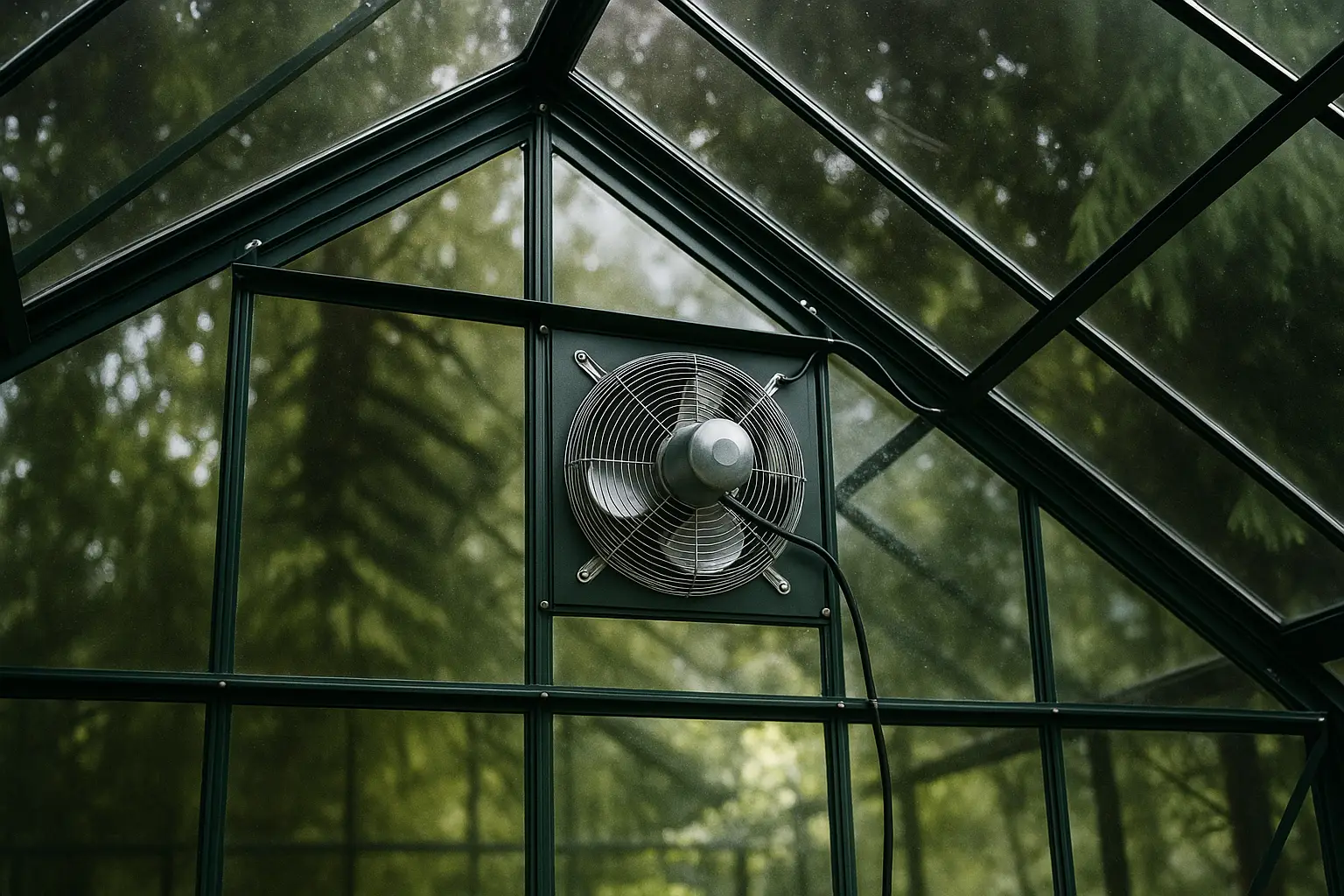
Fan for Greenhouse
Still air is the enemy of a healthy greenhouse. Without proper air circulation, humidity rises, temperatures spike, and diseases spread. A greenhouse fan keeps the air moving, creating a more stable, balanced environment where your plants thrive. Whether you’re growing vegetables, flowers or tropicals, a fan helps you control climate naturally — reducing pests, preventing mould, and improving growth. It’s a simple upgrade with a big impact on plant health and performance.
Why Air Circulation Matters in Every Greenhouse
Unlike outdoor gardens, greenhouses trap air — which means heat, moisture, and airborne pathogens can build up quickly. Without active airflow, this leads to several issues: uneven temperatures, high humidity, and a higher risk of mould, mildew, and fungal diseases.
A greenhouse fan solves these problems by keeping air moving. Constant, gentle circulation helps distribute heat evenly throughout the space, reduces condensation on leaves and glazing, and prevents "dead zones” where moisture can accumulate.
Fans also strengthen plant stems by mimicking natural wind, improving resilience and structure — especially in seedlings and young plants. Whether your greenhouse is large or small, heated or unheated, year-round or seasonal, airflow is essential for maintaining healthy conditions inside.
Greenhouse Fans and What They’re Used For
There are several types of fans designed for greenhouse use, each serving different functions:
Circulation fans (also called horizontal airflow or HAF fans) are designed to move air around the interior. They don’t necessarily ventilate to the outside but maintain consistent air movement inside, which helps balance humidity and temperature.
Exhaust fans pull hot or moist air out of the greenhouse, creating negative pressure that draws in cooler air from vents or louvres. These are often used in warmer months or in heated greenhouses to avoid overheating. Intake fans bring fresh air into the greenhouse, usually working in tandem with exhaust fans. They help regulate CO₂ levels and reduce stale or stagnant air.
Oscillating fans provide targeted airflow across benches or specific plant zones. These are useful in smaller greenhouses or where airflow needs to be directed precisely (e.g. over seed trays or propagation zones).
Most fans are electric, though solar-powered models are increasingly popular for off-grid or energy-efficient systems. Some include thermostats or humidity sensors, activating automatically when conditions require it.
The right fan for your greenhouse depends on size, crop type, climate, and whether you need internal circulation or external ventilation.
How to Size and Place Your Fan Correctly
Choosing the right size fan is essential. Too small, and the airflow won’t reach all areas; too large, and you risk unnecessary noise or power use.
As a rule of thumb, your fan should be able to move the entire air volume of the greenhouse once every minute. To calculate this, multiply the length × width × height of your greenhouse to get the cubic meter volume. Match this to the fan’s CFM or m³/h rating.
Placement matters just as much as size. For circulation fans, mount the unit at plant level or just above, at a slight angle, to create a gentle circular airflow around the entire space. Avoid pointing the fan directly at delicate seedlings or plants, as this can cause drying or stress.
For exhaust systems, position the exhaust fan near the roof (where hot air rises) and the intake vent near the base to create a natural flow. In large greenhouses, multiple fans spaced evenly may be required.
Some setups benefit from automation, using thermostats or humidity controllers to switch fans on or off depending on conditions. This saves energy and ensures your plants get just the right airflow at the right time.
Benefits of Using a Greenhouse Fan
While temperature control is the most obvious reason to install a fan, the benefits go far deeper:
- Humidity management: High humidity encourages pests and diseases. A fan reduces condensation and keeps leaves dry, discouraging mould, mildew, and damping-off in seedlings.
- Improved photosynthesis: Air movement helps deliver CO₂ to plant surfaces more efficiently, supporting stronger growth.
- Pest prevention: Stagnant air invites aphids, whiteflies, and fungus gnats. Movement disrupts their habitat and makes it harder for infestations to take hold.
- Even heat distribution: Whether you’re using a heater or relying on solar warmth, fans prevent hot and cold spots by mixing the air.
- Stronger plants: Just like outdoor wind strengthens stems, indoor airflow promotes sturdier, more compact growth — particularly useful for seedlings and cuttings.
In short, a greenhouse fan improves plant health, air quality, and energy efficiency — especially when paired with proper insulation, vents, and shade systems.

_64037.webp)

_64036.webp)
_64035.webp)

_64033.webp)

_64030.webp)
_64029.webp)
_64028.webp)
_64027.webp)
_64026.webp)
_64025.webp)
_64023.webp)
_64022.webp)
_64021.webp)
_64020.webp)
_64019.webp)
_64018.webp)
_64017.webp)

_64015.webp)
_64014.webp)
_64013.webp)
_63952.webp)
_63951.webp)
_63950.webp)
_63949.webp)

_63619.webp)
_63618.webp)
_63617.webp)


_63612.webp)
_63611.webp)
_63610.webp)

_63609.webp)
_63607.webp)
_63606.webp)


_63602.webp)
_63601.webp)
_63600.webp)
_63572.webp)
_63571.webp)
_63570.webp)